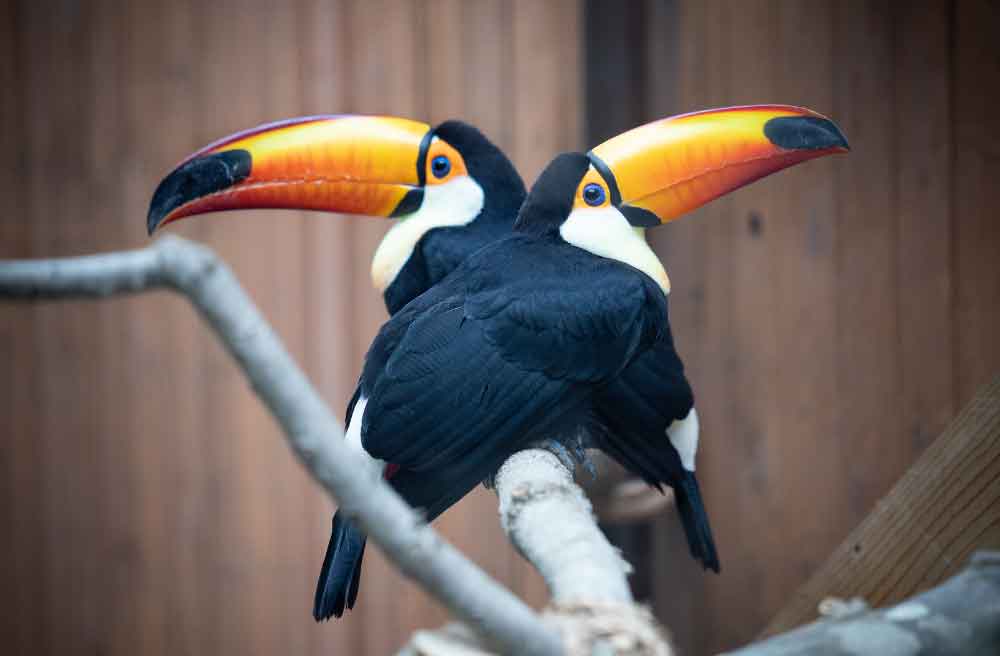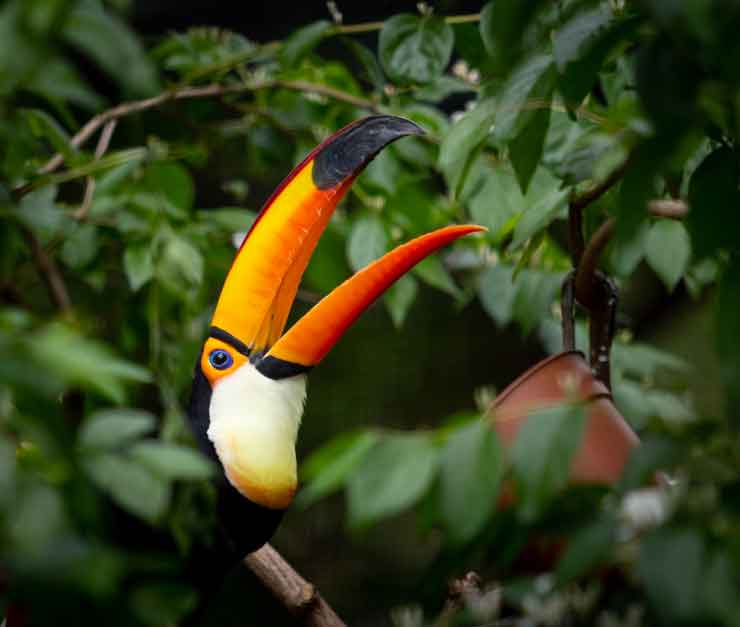Toco Toucans
RAMPHASTOS TOCO

HABITAT
Semi-open areas, such as woodland, grasslands, or plantations/farmland.
GEOGRAPHIC REGION AND RANGE
Tropical areas of central South America
DIET
Frugivore – mainly eats fruit, but will occasionally eat insects, eggs, and small frogs, lizards, or fish.
PHYSICAL DESCRIPTION
Toco toucans are the largest of all toucan species. They have a black body, white throat, and a large yellow-orange to red-orange colored beak with a distinct black marking at the tip of the bill.
SIZE
Average 25 inches (61 cm) in length
WEIGHT
Generally between 1.2 to 1.5 lbs.
LIFESPAN
Usually mid to late teens, up to 20-25 years
THREATS
Fortunately, the population of toco toucans is relatively stable, however other forest toucans are under threat due mainly to the deforestation of the Amazon Rainforest to make way for cattle ranches and roads. Hunting and trapping toucans to be pets or stuffed trophies is also a danger to the populations of many toucan species.
STATUS
Endangered
FUN FACTS
Toucans’ calls can be heard up to a half mile away!
The toucan’s beak appears quite heavy, but is actually light. It is hollow and made of keratin with thin rods of bone to support it – the inside has a similar consistency to a very hard sponge.
Toco toucans are the largest of all toucan species!
Unlike most toucans, tocos don’t live in forests – they prefer open areas like grasslands or shrublands
Toucans use their bills to thermoregulate – to control their internal body temperature. Having a big bill helps to keep these birds cool!
What are AZA Zoos doing for Toco Toucans?
Their zoo population is managed through conservation breeding programs called Species Survival Plan programs, which ensures genetic diversity and species health. While toco toucans are not currently endangered, they do face some threats in their natural habitats which include alteration of their habitat, hunting, and the pet trade. AZA zoos are working to maintain a long-term, genetically valuable population of toco toucans through their SSP program.

